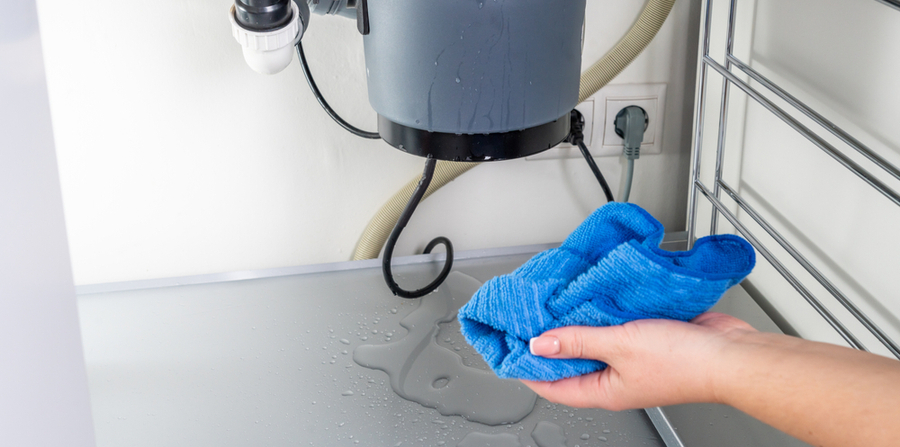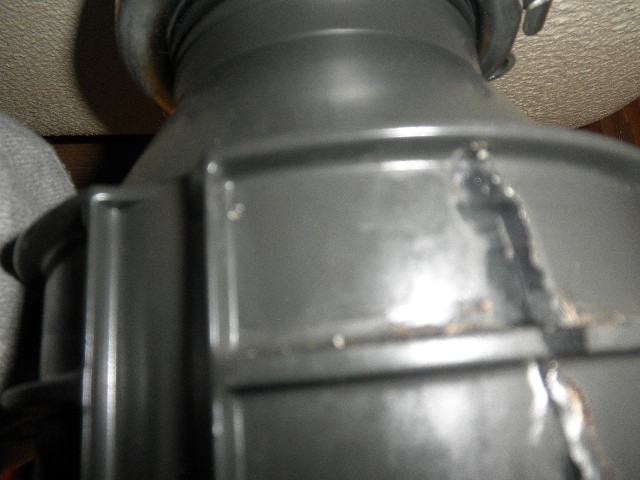Step-by-Step Instructions for Repairing a Leaky Waste Disposal
Need Help? Hire Us Now!We've unearthed this article pertaining to Why Is directly below on the net and believe it made sense to talk about it with you over here.

Waste disposal unit are necessary kitchen area devices that aid in throwing away food waste effectively. Nevertheless, a leaking garbage disposal can be an irritating and untidy problem to handle. Luckily, many leaks can be repaired conveniently with a couple of simple actions. In this short article, we will go over exactly how to fix a dripping waste disposal unit properly.
Intro
Garbage disposals are installed under cooking area sinks and are developed to shred food waste right into smaller sized items, permitting it to travel through the plumbing system conveniently. While these devices are generally reliable, leaks can take place with time because of damage, loosened links, or damage to the device.
Step-by-Step Guide to Dealing With a Dripping Waste Disposal Unit
Shut off the Power
Prior to trying any fixings, guarantee that the power to the waste disposal unit device is switched off to avoid the danger of electric shock.
Find the Leakage
Determine the precise place of the leak and establish the cause
Tighten Links
Use a wrench to tighten up any type of loose connections between the disposal system and the plumbing system.
Replace Seals or Gaskets
If the leak is due to worn seals or gaskets, remove the old components and change them with new ones.
Patching Splits or Holes
For fractures or openings in the disposal system, usage epoxy or an ideal patching material to seal the damaged location.
Recognizing the Source of the Leak
Before trying to take care of a leaking garbage disposal, it is important to identify the resource of the leak. This can normally be done through visual evaluation or by conducting simple examinations.
Visual Inspection
Check the waste disposal unit unit carefully for any indications of water leakage. Pay attention to locations around seals, gaskets, and connection factors.
Testing for Leaks
One way to evaluate for leakages is by running water through the disposal device and checking for any visible signs of leakage.
Usual Root Causes Of Leaks in Garbage Disposals
Worn Seals and Gaskets
Seals and gaskets play an essential duty in avoiding water from dripping out of the garbage disposal. In time, these components can weaken, bring about leakages around the disposal device.
Loose Connections
The connections between the waste disposal unit and the plumbing system can become loosened in time, creating water to leak out during procedure.
Fractures or Holes in the Disposal Device
Physical damage to the garbage disposal, such as splits or holes in the real estate, can also result in leaks.
Tools and Products Needed for Repairing a Dripping Garbage Disposal
Prior to beginning the repair service process, collect the essential tools and products, consisting of a screwdriver, flexible wrench, plumbing professional's putty, substitute seals or gaskets, and epoxy or patching material for fixing cracks or openings.
Examining the Waste Disposal Unit After Fixing
Once the repair is complete, test the waste disposal unit by running water through it to make sure that the leakage has been dealt with.
Preventive Upkeep Tips to Avoid Future Leakages
To prevent future leaks, it is essential to perform routine maintenance on your waste disposal unit. This includes keeping it clean, avoiding putting non-food things or hard objects down the disposal, and periodically looking for leaks or various other concerns.
Final thought
To conclude, taking care of a leaking waste disposal unit is a reasonably straightforward process that can be completed with basic tools and products. By following the actions detailed in this article and exercising precautionary upkeep, you can maintain your waste disposal unit in good working problem and prevent pricey repair services in the future.
HERE’S HOW TO FIX YOUR GARBAGE DISPOSAL
WHAT TO DO IF SOMETHING IS STUCK IN YOUR GARBAGE DISPOSAL
If the impeller won’t turn, there’s probably something stuck in the disposal. It could be a steak bone or peach pit, although plumbers report pulling all sorts of inappropriate objects out of disposals, such as bottle caps or aluminum foil. Make sure power to the disposal is off, and look inside to see if you can see the source of the jam.
Never stick your fingers in a disposal. Pull out anything you see with tongs or pliers.
If the disposal still won’t work, it may be time to call a plumber or consider buying a new disposal. GEM Plumbing & Heating is here for all of your garbage disposal needs.
WHAT TO DO IF YOUR GARBAGE DISPOSAL DRAIN IS CLOGGED
Take everything out from underneath your sink and put a bucket or other container under your disposal to catch any water that drains out. Disconnect your disposal from the power supply. If it’s plugged into a wall outlet, unplug it. If it’s hardwired into an electrical box, go to the electrical panel and turn off the breaker for the disposal. Pour ¼ cup of baking soda into the drain, followed by ½ cup of white vinegar. Give the solution a few minutes to fizz and do its work. Look into the disposal with a flashlight to see if you can see an object that might be causing the clog. If you see it, remove it using tongs or pliers. MORE TIPS ON DEALING WITH A CLOGGED GARBAGE DISPOSAL
Never use drain cleaner in a garbage disposal. It can damage the plastic parts inside the disposal. You can also be splashed with the caustic liquid while working to clear the clog. Beware! Never stick your fingers into a garbage disposal. Trust us — not a good idea. In many instances, your dishwasher drains through your garbage disposal. This allows the disposal to grind any large food particles that may be drained out of your dishwasher. There are some jurisdictions, however, where the plumbing code prohibits such a connection. WHAT TO DO WHEN YOUR DISHWASHER DRAINS THROUGH THE DISPOSAL
Run some water in the sink so your plunger has at least a ½-inch of water to create a seal and plunge vigorously up and down several times. You may need to repeat this several times. Run hot water down the drain to clear any residue that remains.

I am very eager about Why Is and I'm hoping you enjoyed my post. For those who liked our article please don't forget to pass it around. I appreciate reading our article about Garbage Disposal Leaking From Bottom.
Call Today